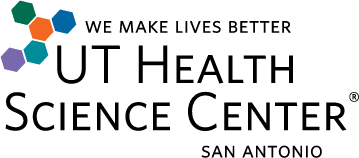 |
| :: Home | :: About Us | :: Faculty | :: Resources | :: Support | :: Publications | :: IAAM | :: AMoID | :: PCMID |

IAAM Standard Operating Procedures (pdf format)
Invasive Aspergillosis Animal Models (IAAM) Contract
Invasive aspergillosis is a major cause of morbidity and mortality in immunosuppressed hosts. The diagnosis of this infection remains very difficult and there are limited treatment options. Animal models have been utilized to evaluate both the diagnosis and treatment of infection and to assess the pathogenicity and virulence of the organism. However, these animal models have not been standardized and have been used in only a limited fashion for genomic evaluation in this disease. Extensive efforts are underway in Aspergillus that will significantly expand the genomic information regarding Aspergillus spp. Thus, the overall objective of this research is to establish and standardize animal models of invasive aspergillosis that can be used to apply genomic information regarding pathogenicity and virulence of Aspergillus in order to improve diagnosis, disease monitoring and therapy of this frequently fatal disease.
SPECIFIC AIMS of this contract are:
1) to establish and standardize animal models of invasive aspergillosis including murine and larger animal species with both pulmonary and disseminated infection;
2) to develop molecular tools utilizing genomic information that will provide standardized procedures for conducting genetic manipulation of Aspergillus strains that can be tested in animal model systems for the purpose of identifying new diagnostic targets or tools.
3) to determine gene expression of both whole cell and individual target genes of Aspergillus in experimental infection;
4) to utilize genomic data to develop novel diagnostic and immunologic
approaches in the management of invasive aspergillosis;
5) to utilize the genetically manipulated Aspergillus strains to assess pathogenicity and virulence in animal models of infection to determine how new diagnostics perform over the course of disease;
6) to provide a mechanism for disseminating knowledge and skills obtained from this effort to other interested scientists and laboratories and effectively interact with the extended Aspergillus community (academia as well as commercial interests) to develop new diagnostic tools. (click link to see a recent presentation from the 2006 Advances Against Aspergillosis meeting )
Essential Criteria for Aspergillus Diagnostics
- Rapid (within a day; ideally < 3 hr)
- Inexpensive
- Available locally
- Distinguish infection from disease
- Detectable at early time point (initial infection)
- Useful serial marker for evaluating course of infection/response to therapy
- Measurable in blood and in other body fluids (e.g. bronchial alveolar lavage fluid)
- Detects all species of Aspergillus
As a service to the Aspergillus research community, the University of Texas Health Science Center at San Antonio will provide companies and academic investigators with samples, including validated positive and negative controls, to validate Aspergillus diagnostic assays.
Additionally, once IAAM contract investigators have identified promising diagnostic target assays, they will be interested in working with commercial organizations to bring these assays to market for use in clinical diagnostic settings.
For more information about obtaining samples or commercial partnering opportunities, please contact:
Contractor:
Thomas F. Patterson, MD
The University of Texas Health Science Center at San Antonio
7703 Floyd Curl Drive MC 7881 San Antonio, Texas 78229-3900
210-567-6680
210-567-3303 (FAX)
patterson@uthscsa.edu
Program Officer:
Rory A. Duncan, M.S. Mycology Program Officer
Bacteriology and Mycology Branch Division of Microbiology and Infectious Diseases NIAID/NIH/DHHS
6610 Rockledge Drive, Room 4109 MSC6603
Bethesda, MD 20892-6603
301-402-8613
301-402-2508 (FAX)
rd188u@nih.gov

Links provided from Health Science Center pages to other web sites do not constitute or imply an endorsement of those sites, their content, or products and services associated with those sites. Best viewed at 1024x768 resolution.